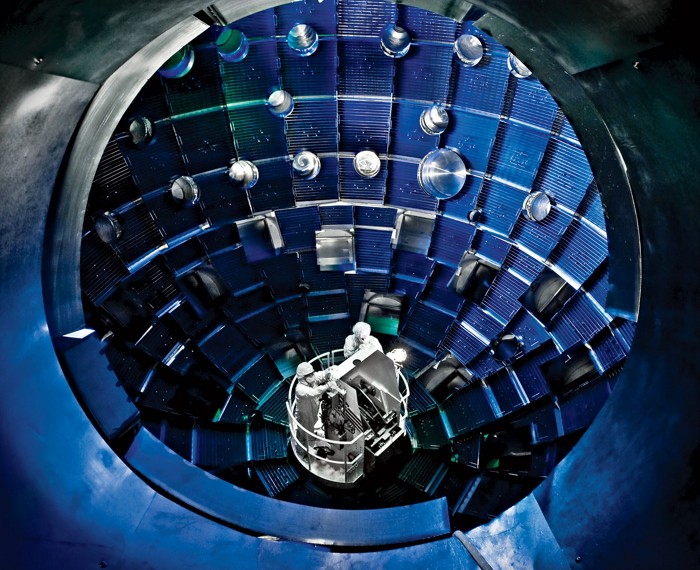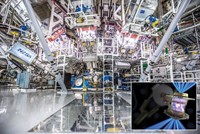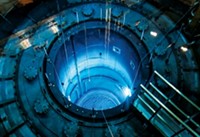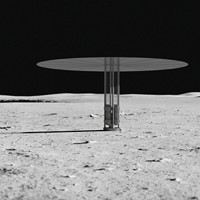Advertisement
Grab your lab coat. Let's get started
Welcome!
Welcome!
Create an account below to get 6 C&EN articles per month, receive newsletters and more - all free.
It seems this is your first time logging in online. Please enter the following information to continue.
As an ACS member you automatically get access to this site. All we need is few more details to create your reading experience.
Not you? Sign in with a different account.
Not you? Sign in with a different account.
ERROR 1
ERROR 1
ERROR 2
ERROR 2
ERROR 2
ERROR 2
ERROR 2
Password and Confirm password must match.
If you have an ACS member number, please enter it here so we can link this account to your membership. (optional)
ERROR 2
ACS values your privacy. By submitting your information, you are gaining access to C&EN and subscribing to our weekly newsletter. We use the information you provide to make your reading experience better, and we will never sell your data to third party members.
Nuclear Power
Fusion experiments broke records this year, raising hopes for fusion power
With the help of materials advances, scientists in California and Massachusetts continue to creep toward fusion reactions that produce more energy than they take in
by Sam Lemonick
November 30, 2021
| A version of this story appeared in
Volume 99, Issue 44

Scientists this year took two big steps on what has been a decades-long, slow march to fusion power. Researchers in California used lasers to trigger a record-breaking fusion reaction, while a team in Massachusetts demonstrated a powerful magnet that could one day be incorporated into an electricity-generating fusion reactor.
Whether these and other recent advances lead to fusion power remains to be seen. Even if they do, viable fusion reactors won’t be built for a decade or more. But people involved in both these projects describe a range of chemical and materials science developments that resulted in these breakthroughs, including nearly flawless lenses that focus laser light and superconducting tape coiled inside a giant magnet. The researchers emphasize that at this point, more than half a century after the first investigations of fusion energy, some of the hardest aspects of their work come not in fundamental physics research but in optimizing equipment and processes to ensure their machines will work reliably and efficiently.
Fusion power would draw on the enormous amount of energy released when two atomic nuclei, usually isotopes of hydrogen, fuse to form a heavier one. Fusion reactions also power stars and provide some of the destructive power of modern nuclear weapons. In a reactor, the energy released by fusion would spin a turbine to generate electricity via a fluid that captures the reaction’s released heat. This reaction is distinct from nuclear fission, which occurs in current nuclear reactors and involves splitting the nuclei of heavy elements like plutonium or uranium.
The biggest advantages of fusion over fission as a source of electricity are that fusion produces comparatively little dangerous radiation or radioactive waste, and its fuel—typically the hydrogen isotopes deuterium and tritium—are so plentiful as to be essentially limitless. Fusion also has an inherent safety advantage because it doesn’t involve chain reactions that can cause a reactor to melt down.

Fusion’s weakness, the one that has kept viable reactors out of reach for decades, is that reactors would need to heat fuels to staggering temperatures to create a sustained, energy-producing fusion reaction. Most reactor designs call for heating the fuel to a plasma at 100 million °C or more. Doing so requires a huge energy input, and no fusion experiment so far has produced as much energy as researchers have put in. The other difficulty is containing and maintaining the superhot plasma of fuel, which also has to be pressurized to ensure it is dense enough to trigger fusion. The current record for the lifetime of this pressurized hot plasma is less than 2 min.
Proponents of fusion energy—not to mention the many people working on fusion experiments—believe that these issues can be overcome. This year’s two advances show that teams are making progress.
In August, the National Ignition Facility (NIF) at Lawrence Livermore National Laboratory (LLNL) in California reported it had set a new record for fusion energy almost a decade after it started operating. The facility’s 192 lasers fired at a 2 mm wide diamond sphere containing a deuterium-and-tritium fuel, rapidly heating the surface of the sphere and then the fuel inside. The fuel formed a hot, dense plasma—about 100 million °C and 1,000 g/cm3—forcing the deuterium and tritium nuclei to fuse into a helium nuclei and releasing 1.3 MJ of energy.
The design, called an inertial confinement fusion reactor, may not be practical for generating electricity for several reasons, including the cost of building the fuel capsules. “It’s very awkward engineering if you want to make a power plant,” says fusion reactor expert Thomas Dolan of the University of Illinois Urbana-Champaign. But the design is useful for studying fusion reactions, both as a source of power and in the context of nuclear weapons.
The amount of energy released in that experiment was not a huge amount in itself, enough to light a 60 W light bulb for 6 h. “From a scientific point of view, the NIF 1.3 MJ shot was a monumental triumph. From an engineering point of view inertial fusion is still a long way from energy breakeven,” says Steven Cowley, a fusion researcher at Princeton University, in an email. But 1.3 MJ is about 25 times NIF’s previous record. And it’s about 70% of the energy the lasers delivered to the fuel capsule, meaning the researchers at NIF are edging closer to the point where their fusion reactor could produce net power.
Getting to this new record has required improvements in two main areas, according to members of the team: the optics that guide the lasers’ light to the target and the capsule that holds the fusion fuel. Tayyab Suratwala, LLNL’s program director for Optics and Materials Science & Technology, is in charge of almost 35,000 lenses, mirrors, and other optics used in NIF. The goal of these optics is to amplify the light’s power 1 million billion times so it can heat the fuel sphere as much as possible while losing as little as possible of the light’s energy in the process.

Suratwala and his colleagues are in a constant battle with the lasers, which deliver light with so much energy that it destroys the mirrors and lenses it touches. NIF is “the only laser that operates intentionally above the damage threshold,” he says. “It’s basically running at redline. The optics get harmed, we remove the optics, and repair them and return them.” His team of about 150 people also develops new ways to limit damage so the optics last longer and allow more light to reach the target.
NIF uses potassium dihydrogen phosphate (KDP) and potassium dideuterium phosphate (DKDP) optics that rotate the light’s polarity to help amplify its power. Also, just before the light reaches the target, the optics convert it from infrared to ultraviolet, a more efficient wavelength for achieving fusion.
The KDP and DKDP optics get most of the team’s attention. They are crystals grown, cut, and polished by outside companies. Suratwala says that as recently as a couple of decades ago, making crystals into optics was the domain of artisans, and their work sometimes left defects that were invisible to the naked eye but that could nonetheless reduce the optics’ efficiency. “It turns out scratches and defects on the surface absorb laser light and damage the optic,” Suratwala says.
The LLNL team has worked to make the process of growing, cutting, and polishing the optics more repeatable. It developed techniques to trace defects in the optics to their source in the manufacturing process so they can be mitigated. The researchers also pioneered a method for using hydrofluoric acid to etch away fractures as small as 10 nm from an optic’s surface.
The group still has to deal with damage the optics incur during the laser shots. Wren Carr, an LLNL physicist who has worked to understand how laser light can destroy optics, says contaminants like metals or organic molecules can land on the optics’ surfaces and then absorb laser light during a shot. The contaminants heat up from the absorbed light, damaging the optics. One simple solution the lab recently developed was adding sacrificial debris shields made from fused silica glass, which is less expensive than KDP and DKDP. These shields are transparent to the laser light and catch debris before they hit the KDP and DKDP optics. Carr says these shields have reduced the damage to the optics during operation by 99%.
Carr’s team has also worked on ways to repair damage that still occurs. When debris hits the optics, Carr says, the resulting fractures have “all these dangly bonds” that absorb laser light and heat up to surface-of-the-sun temperatures, sending damaging shock waves through the crystal. So his team uses carbon dioxide lasers to carve out the fractured area, leaving a scar that doesn’t grow, thus protecting the rest of the crystal.
All together, Suratwala says, these different approaches to limiting and repairing optics damage have reduced the number of damage sites on a given optic from 100,000 to around 50, even while the laser’s power has increased 10-fold. This focus on mitigating damage to the optics helped make the record shot possible. About 15 years ago, the facility couldn’t fire lasers at the power used in August, says Marcus Monticelli, a chemical engineer in charge of optics process engineering for NIF. He says it is gratifying to see the impact of the optics scientists’ work. For example, a new optics coating might allow a few percent more of the laser light to reach the fuel capsule, he says, and that means more energy and more power to drive the fusion reaction.
But Suratwala says his group is not yet ready for more laser power. It still needs to find ways to reduce the amount of debris in the system, which remains a major source of damage. “When we solve this, we can go to higher power,” he says, possibly in the next several years. NIF intends to make several shots at the new record power, starting at the end of 2021 and continuing into 2022, before moving to more powerful shots.
While the NIF optics are spread out over a facility about 30,000 m2 in area, their job is to focus the laser’s light onto a spherical 2 mm target. That target has been the other object of LLNL experts’ attention over the past 2 decades. Like with the optics, careful improvements to the spherical capsule holding the fuel helped make the record shot possible, and more progress will have to happen to keep edging closer to the energy break-even point.
NIF’s laser light never hits the deuterium-and-tritium fuel itself. Instead, it is absorbed and reemitted as X-rays by a small chamber surrounding the fuel capsule. LLNL scientists have experimented with a number of low-atomic-number materials for the capsule because these materials can absorb X-ray energy. The NIF team has tried beryllium, boron, plastic, and carbon, but the current capsules are made from synthetic diamond.
Abbas Nikroo, who leads the target-fabrication efforts, says his group adapted microwave plasma-assisted chemical vapor deposition technology, which is used in the semiconductor industry. The method allows the team to build a uniform, 100 μm thick diamond crystal around a silica sphere. The team grows the crystal in 1 week and then polishes it for 2 months to get the target smooth to within 2 nm. For Earth to meet this smoothness specification at the target’s scale, anything taller than a 10-story building would have to be polished off.
To fill the sphere, LLNL researchers glue a tube one-fiftieth the thickness of a hair—2 μm—in place. Finding the right glue has been another difficult process, according to Suhas Bhandarkar, a group leader for NIF target materials. The tube has shrunk from 30 to 2 μm over the years, meaning the team is using just picoliters of glue to hold it in place. “The glue blob is so small you need an electron microscope to see it,” Bhandarkar says. This tiny bit of glue has to hold the tube in place through the stresses of filling the capsule with fuel, including being cooled down to 20 K, the temperature at which the gaseous fuel freezes into a spherical crystal. The whole process takes about 7 months.

Like for their colleagues working on the optics, much of the capsule team’s work these days is about process, not chemistry. Michael Stadermann, Nikroo’s colleague in target fabrication, says each capsule is carefully tracked through manufacture and evaluated with atomic force microscopy and X-ray absorption spectroscopy before it’s used. That way, any anomalies during the shot can hopefully be traced to their source in the fabrication process.
As the target group gets ready for follow-up shots at the record-breaking powers, it is going to start experimenting with boron carbide capsules. The group thinks faults or stresses within the diamond crystals might make the implosion that drives the fusion process less uniform, reducing efficiency. Stadermann says an amorphous material like boron carbide might not have those problems. But he says it takes about 6 years to develop a new capsule. The target team is also going to experiment with thinner fill tubes, both 1 and 5 μm, to see how they affect the capsule’s performance.
Advertisement
On the other side of the US, researchers at the Massachusetts Institute of Technology and a spin-off company, Commonwealth Fusion Systems (CFS), have been working on a totally different fusion reactor design from the one NIF uses. Known as a tokamak, this doughnut-shaped device will use magnetic fields to contain and compress a ring of fuel plasma to trigger fusion.
In September, the MIT and CFS team demonstrated a new kind of magnet, based on high-temperature superconducting barium copper oxide (REBCO), that could be used in a tokamak. The magnets could produce a 20 tesla magnetic field, a record for this kind of material and strong enough for the prototype tokamak reactor the team plans to build by 2025. High-temperature superconducting magnets allow the group’s tokamak design to be smaller than other tokamaks at the same field strength, which the team says will make its design cheaper and more efficient to build and operate (J. Plasma Phys. 2020, DOI: 10.1017/S0022377820001257).
UIUC’s Dolan says the new magnet is an important demonstration of the engineering that will be necessary to make the reactor design work. “We knew you could do it, but when you build something big like that, things can go wrong. This didn’t go wrong,” he says. He thinks the MIT-CFS work will also benefit other groups working on tokamak reactors because they can adopt the superconductor magnet design and the team’s engineering processes to make their own magnets.
One of the hurdles to building this magnet was obtaining enough REBCO tape. CFS chief scientific officer and cofounder Brandon Sorbom says that only in the past several years has the team been able to build the tape’s supply chain with the help of the companies that manufacture the material. “Our order of tape was 10 times what anyone else had ever ordered,” he says. “We think this magnet has 50% of all the tape ever made.”
He foresees a similar journey ahead as the researchers decide what material to use in the tokamak’s blanket, the liquid that absorbs heat from the fusion reaction and drives the generator that will make electricity. The leading candidate right now is FLiBe, a molten salt composed of lithium fluoride and beryllium fluoride. One advantage of FLiBe is that neutron radiation from the fusion reaction will produce tritium from lithium, meaning the blanket could produce fuel for the reactor.
No one is making FLiBe at industrial quantities, Sorbom says. He hopes the MIT-CFS team will be able to change that, as it did for REBCO tape. The researchers will need FLiBe for their first commercial reactor, called ARC, which they hope will start operating in the 2030s.
Researchers from both teams emphasize how much they enjoy the interdisciplinary aspects of fusion energy research. “One thing I love about my job is the diversity of things I work on. Every year there’s something new,” NIF’s Monticelli says. For Carr, it’s getting to work with scientists and engineers across a range of disciplines. “If there’s a question I have, there’s an expert within a half mile I can talk to,” he says.
The process of working on the design’s requirements for the FLiBe blanket has given Sorbom the chance to start working with researchers he hasn’t normally spent much time with. “I think one of the really cool things I love about fusion is it’s so interdisciplinary,” he says. For example, this work on the blanket will require chemical insights. “In the not-so-distant future we’ll be hiring a lot of chemical engineers. I’m excited to have a new set of scientists and engineers brought in.”
CORRECTION
This story was updated on Dec. 16, 2021, to correct the example of how much energy the National Ignition Facility experiment produced in August. The experiment produced 1.3 MJ, which could run a 60 W light bulb for 6 h, not a couple of weeks.





Join the conversation
Contact the reporter
Submit a Letter to the Editor for publication
Engage with us on Twitter